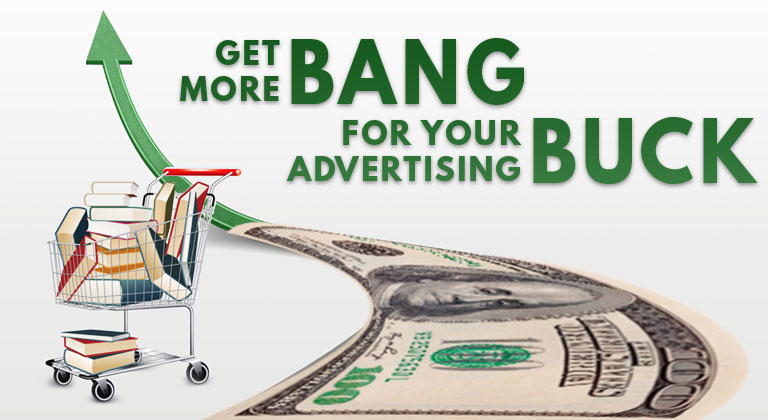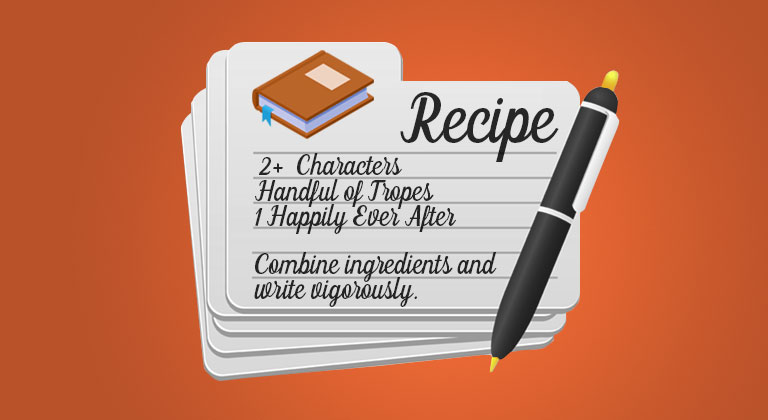Stretching Your Ad Budget (Part 1) – Selling Books
As an independent author without a large publisher with deep marketing pockets bankrolling your book, how you spend your limited advertising budget is something you have to think carefully about. Not only do you need to consider how and where to spend your money, but what your overall marketing goals are in the first place. Sure, selling more books is the obvious one and certainly provides the most immediate results – but there are some longer term strategies that advertising can also be used for, such as growing your mailing list or promoting free copies of your book (which itself can increase sales). In this three part series, we’ll go over how to get the most out of your advertising dollar for each of these strategies, starting with the one all of us are most interested in – selling more copies!
(And don’t forget to take part in the survey we link to right at the end!)
Your advertising budget is limited. Where should you spend it?
Different advertising strategies produce different results – and require different platforms for maximum efficiency. Here’s your guide to getting started.
I’ve been in the advertising game for a couple of decades now, and I’ve seen some significant changes during that period. I started off when Google was still a fairly new invention, and traditional advertisers still relied on billboards, newspaper ads and radio spots – with the philosophy of “if you throw enough money at your advertising, some of it will stick.”
Flash forward to 2019, and no advertiser approaches things that way any more. From Google Adwords to Advertising on Amazon, you can get the sort of facts and figures about your advertising that the likes of Don Draper would have gone nuts for; but a lot of people are still left in the dark about where best to spend their advertising budget, and what options are available to them.
We’ve gone over the basics in our overall advertising and marketing starter guide – but in this article, I’m going to quickly go over the specifics of some different advertising platforms; and how each one might serve you best.

Strategy Versus Tactics
Before we jump into the difference between Facebook ads and Advertising on Amazon, we need to take a step back and look at the big picture. Because advertising is quite a complex business, a lot of authors who don’t come from an advertising background jump into platforms like Facebook and Advertising on Amazon with the same attitude as those advertisers from twenty years ago – if you throw enough money at promoting your book, someone will eventually buy it.
However, a couple of weeks later – hundreds or perhaps thousands of dollars poorer – many would-be advertisers take a step back thinking that ‘advertising doesn’t work.’ And that’s both true and untrue. Their advertising might not have ‘worked’ for them, but that may be because their expectations weren’t lined up with reality. If advertising really was as simple as “insert money, withdraw profit” then we’d all be doing it, and ad related author services like our own or bigger courses like those from Mark Dawson, wouldn’t have any audience.
Advertising can be successful – massively so – but it takes time, commitment, and courage to get the most out of it; including the willingness to spend money not knowing whether or not you’ll get an immediate return on it – or any at all.
But more than that – it takes strategy.
Strategy is how you define the goal of your advertising. Tactics are the way you approach achieving those goals. A lot of authors think tactically when they jump into advertising – starting off with “I’ll use Facebook” or “it’s time to invest in Advertising on Amazon” without thinking of what their goal for that advertising is (beyond “selling loads of books.”)
There are so many nuances to self-publishing that it’s important to think about your strategy first, and then pick and choose your tactics to best suit that strategy; because the platform you might have initially been drawn to might not be the best one to use to achieve your strategic goals.
What are some strategies?
As soon as I mention the ‘strategy versus tactics’ thing I often lose people – but trust me; whatever you’ve done already in marketing your books probably has a strategy behind it. The question is, though – did your strategy drive your tactics? Or vice versa?
Since we’re talking about marketing your books, let’s start at the first and most essential strategy – selling more books.
Strategy #1 – Sell More Books
This is probably the goal most authors default to, and it makes sense. After all, whether we’re planning to pay the mortgage with our royalties, or just have enough for a nice dinner out every month, we all want people to read our books; so using advertising to reach more paying customers is a very sensible strategy.
With this goal in mind, what tactics can you use to achieve this goal?
Tactic #1 – Advertising on Amazon
Amazon’s marketing platform is becoming more and more visible, and these days it’s fair to say that any author serious about their career needs to be advertising on it. Unfortunately, the learning curve is steep, and the pitfalls are plenty; but all it takes is training and commitment to master this advertising platform. If you haven’t checked it out already, we have some tips on getting started with it here.
In terms of selling more books, Advertising on Amazon is also one of the most powerful tools you can use. What you have to know, though, is that Advertising on Amazon is a long-term tactic. Your intention should be to set up affordable ads for your books, which then help you make enough sales to pay for the advertising and make a profit. If you’re smart, you’ll invest that profit back into advertising for a period, and constantly tweak your campaigns to increase their profitability. The end goal should be to have a campaign that reliably produces more in profit than it costs to run, and can be scaled up consistently – so if you’ve got an ACOS (average cost of sale) of 50% (meaning for every dollar you spend on advertising, you get $1.50 back in book sales) you can simply scale up your daily spend to make more money – $10 becomes $15, and $100 in advertising costs will sell $150 in copies of your books.
- PROS: Advertising on Amazon is perhaps the best tactic for achieving this goal as it’s right where the customers are, it’s very affordable, and if you can create a campaign with a positive ROI (return on investment) you can have it running in the background slowly bumping up your sales on each and every book you run it with.
- CONS: There’s a very steep learning curve. It can take a while to ‘kick in’ and is unlikely to have an immediate and dramatic impact on your sales; but will keep boosting your books in the background as long as you set up a good campaign.
Tactic #2 – Advertising on Facebook
Facebook is fast becoming one of the most powerful advertising platforms out there. In addition to having one of the biggest audiences in social media, Facebook also seamlessly blends your ads into people’s Facebook experience; meaning it’s much less ‘in your face’ than other advertising platforms. It’s also immediate – when you run an ad you’ll start seeing an impact almost immediately, whereas Advertising on Amazon takes a little time to reach a healthy simmer. We recently wrote a quick guide on getting started with Facebook ads, if you need it.
The disadvantages are plentiful, though. Because people aren’t on Facebook to shop, it can cost a lot more money to generate sales than a platform like Advertising on Amazon. Likewise, you’ll do well to have unique graphics that meet Facebook’s standards, and unless you’re a whizz with Photoshop, you might have to hire somebody to make those for you. And finally, like any advertising platform, there’s quite a steep learning curve; and a lot of important details you’ll need to know to consistently deliver a return on investment.
That being said, Facebook remains one of my favorite places to advertise – and it has significantly more tactical versatility than Advertising on Amazon; more on that later.
- PROS: It’s immediate, producing results pretty much within hours of going live. Also, Facebook has incredible power in the ability to find your ideal audiences using the email addresses of your current fans or subscribers. You can also advertise on Instagram through your Facebook dashboard.
- CONS: It’s a more expensive platform. You’re unlikely to get a positive ROI unless you have enough existing reader data to create a targeted audience. Perhaps most importantly – you can track clicks from Facebook to your book’s product page on Amazon; but there’s no way to definitively track sales or KU pagereads that occur as a result of this advertising.
Tactic #3 – Advertising on other Social Media
Facebook is just one social media platform, and plenty others exist. I won’t go into breaking down each of them, but it’s certainly worth exploring advertising on Twitter, YouTube and any other platforms your pen name has a presence on. Twitter is very similar to Facebook in terms of versatility and operation, while YouTube is the second biggest search engine in the world, although obviously you’ll have to use video to run ads there.
- PROS: You’ll reach audiences that aren’t saturated with ads for other books, like you might find on Facebook. Some advertising platforms offer bold and exciting new ways to promote your book (like video book trailers on YouTube) while others have the same tactical versatility as Facebook.
- CONS: The further afield from the core platforms you go, the more difficult it is to find information on how to create effective advertising campaigns – although that could be an opportunity to stake out bold new territory. You might also need specialist software or training to create suitable advertising assets, like videos or advertising banners.
Tactic #4 – Advertise via a Newsletter
Email remains perhaps the most powerful way to reach potential readers for your book, and we recommend it as an essential part of your marketing strategy. Another consistent marketing opportunity is to pay to have your book featured on a subscriber newsletter. Perhaps the biggest in the business is BookBub, which reaches hundreds of thousands of potential readers; and if authors manage to get a spot on their hotly-contested newsletter, they’ll consistently report a huge return on their investment.
If you’re looking to sell books, rather than give them away for free, then you have to weigh the cost of the spot in the newsletter against the book sales you’ll generate from it. While BookBub delivers very consistent results, there are all sorts of other newsletters out there, and they can sometimes be less… consistent. The problem is, newsletters that deliver results and newsletters that don’t are often difficult to tell apart – except by reputation and testimonial – and it’s a bit of a gamble finding one you can trust to deliver.
Another thing to consider is the audience and qualifications for getting a spot. Some newsletters are only for certain genres, like our romance newsletter, some require the book to be free or on sale, have certain ratings, length, etc. As usual, doing your research can help identify the ones right for you and once you try a few you can narrow them down to the ones that work best for your book.
- PROS: Can potentially deliver an immediate and significant boost in book sales, the moment the newsletter hits reader’s inboxes. Newsletters often parallel their emails with postings on their website and social media pages.
- CONS: It’s difficult to know which newsletters deliver sales, and which ones don’t. Newsletter campaigns are generally short and powerful – so you’ll see a brief boost in sales, but it won’t be ongoing like with Advertising on Amazon. Similarly, newsletters are “one and done.” Because they reach the same audience again and again, it’s only sensible to promote your book once on a newsletter, unless you know it’s been long enough for a significant number of new subscribers to have signed up in the meantime.
Tactic #4 – Advertise via a Website
Bookbub received a lot of criticism for how stringent their submission standards have become – and have compensated by offering authors another way to reach the Bookbub audience – advertising directly on their website. Likewise, GoodReads and other book-friendly websites offer the opportunity to run ads for your titles on them. There are a litany of book sites out there – but one of the challenges is figuring out which ones are worth the money, and which ones aren’t.
- PROS: You can reach a whole new audience by advertising on third-party websites, and they’re often very cost-effective compared to sites like Facebook.
- CONS: Like with newsletters, there’s little way to be sure which websites are worth advertising on, and which aren’t.
Tactic #5 – Advertise/Sponsor a Blogger or Influencer
Veteran self-published authors are fans of ‘blog tours’ and other highly effective techniques for reaching readers by partnering with other authors, book review blogs, social media influencers on Facebook, Twitter, YouTube and Instagram, and other like-minded figures who live and breathe books and reading.
We’re going to cover blog tours and these other approaches in a later post, but one thing worth mentioning here is the possibility to work directly with bloggers and influencers who have a large audience by sponsoring them, or paying for them to talk about (i.e. promote) your book.
Once again, which influencers are worth investing in is a question that’s not easily answered – some have huge audiences, while others have smaller audiences that buy books, making spend with them reach fewer people, but give you a better return for your investment.
A lot of book bloggers and the like won’t accept paid promotions because they want to keep their reviews ethical and uninfluenced by money. Those that do are required by the Federal Communications Commission (FCC) to state whether or not a post or blog featuring your book is a paid promotion or not. This is a turn-off for a lot of authors because they feel to have their book clearly ‘pimped’ on social media somehow detracts from the literary merit of it.
Whether you believe that or not depends on your perspective on social media and publishing – although it’s worth pointing out that in the same way book promotion services like BookBub are ‘paid’ yet have stringent quality demands for participating authors, there are many bloggers and influencers who have the same requirements (as in, they won’t just promote anything.)
…although there are some who will.
- PROS: Getting a blogger or influencer to talk directly about your book gives it a legitimacy, intimacy and impact that ads on Facebook or Amazon simply can’t replicate.
- CONS: Once again, it’s very difficult to know which bloggers or influencers will deliver return on your investment, or actually reach the audience they claim.

Where can you find these newsletters/blogs/websites?
I’ve deliberately not included very many links to external blogs, websites and services above because there are so many of them, and people’s experiences of them vary so hugely, that we didn’t want to deliberately or accidentally ‘endorse’ any by linking to them without knowing exactly how many exist. However, if you’d like to help us gather that knowledge, we’d love your input.
In fact, we’ve put together a survey we’d love you to fill in if there are any bloggers, websites, newsletters or influencers you’d recommend (or avoid.) We’ll share the results with you when we have enough to make an impact. Click on the image below to participate!
Stand by for Part Two!
Next time, we’ll be back to focus on another strategy for building your career as a self-published author – using your advertising budget to build a subscriber base, and how to most-effectively engage with them, and use them to build your readership. Stay tuned!














1 Comments